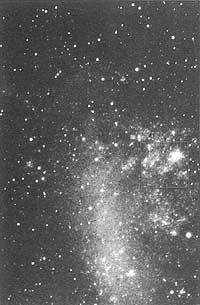Supernova 1987a: a new study for theories of star evolution
1987/08/01 Balcells, Marc Iturria: Elhuyar aldizkaria
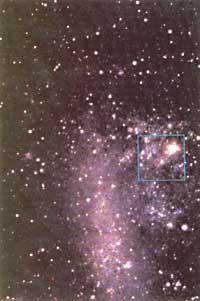
The name Supernova comes from the word Noba, "izar berri". The phenomenon is not new: throughout history and throughout prehistory, perhaps, the appearance of a new star in the mass has occurred on several occasions. Those who thought that the stars were immutable (called fixed) should be surprised by these phenomena in the ancient sky.
Today we know how stars evolve. As we know that the energy source of stars is nuclear energy, we have very precise models of their internal structure and we can predict evolution in millions of years through computers. It is interesting to know the nature of the instability caused by the explosion of the supernova and the type of stars they can withstand. Can the sun explode someday?
Unfortunately, our galaxy is very poor in offering visible supernovae, so it has prevented us from having data that confirm the validity of our theories. In the last thousand years only three supernovae have been detected: 1054 (observed by Chinese astronomers), 1572 (observed by Tycho Brahe) and 1604 (seen by Johannes Kepler). They were bright objects that could be seen with daylight. However, in 1604 there were no telescopes by chance.
It may be thought that more supernovae will be created, but in this discoidal galaxy there are large amounts of gas and dust in stars very opaque to visible light. On average, when a star's light is 3000 light years, it is 2.5 times weaker and molecular clouds are much more opaque. The diameter of our galaxy is about 100,000 light years. Therefore, most supernovae can be invisible from Earth (invisible light, but radio and neutrino emissions would be detectable). The solution is to observe other galaxies.
This has accumulated a lot of information about supernovae. As a result of these observations, supernovae have been divided into two groups: Class I, where old stars abound, have no trace of hydrogen in the emission spectrum. Type II originates in large star-forming regions, in the arms of spiral galaxies and regular galaxies, with intense hydrogen emission lines in the spectrum. As is believed today, both types follow two totally different processes that lead to the catastrophic instability of the star.
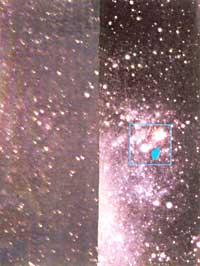
Type I supernova occurs when a white dwarf from a binary system removes material from its friend. Binary stars are many in the galaxy. The white nano is a very old star, very compact and its density is the most degenerate electron (those of higher density that admits the principle of Heisenberg). This situation is equivalent to contracting the entire mass of the Sun to the size of the Earth. Degenerated matter is very incompressible so the star cannot contract it, heat it and react nuclear in its area.
If you have a violent gravitational field, mass transfer is very simple if your friend is an extended red giant. If the white dwarf reaches the mass of Chandrase Khar 1.4 times the mass of the Sun, instability occurs when it reaches 15 million degrees. Then begin the nuclear reactions that turn hydrogen into helium. Since four hydrogen cores weigh more than one helium core, the reaction chain is energetically favorable and the resulting energy is transformed into radiation and neutrino. The nuclear radiation that occurs in the small area, plus the thermal pressure of the gas, suffers the gravity of the star.
In these conditions the star reaches a stable equilibrium. If the star contracts for one cause or another, the internal temperature increases and the nuclear reactions are very sensitive to temperature, they accelerate and their pressure stops the collapse. If the star begins to expand, the opposite happens. Therefore, the star has an inner mechanism, such as a thermostat, which ensures the balance between gravity inward and thermal and nuclear pressure out.
They produce more atomic elements of nuclear reactions. The ashes generated by the nuclear fires remain buried in the heart of the star. Convection does not have enough strength to outcrop these residues and the solar wind cannot bring them into space. The last step of these evolutions is the iron core. Later on, the reactions are not energetic flattering, since it would be necessary to provide energy to carry them out. Only massive stars come to this situation. The mass is compared to the Sun. The minimum mass needed to convert a star into a supernova is 8 times that of the Sun. In smaller stars the process is never achieved until obtaining iron atoms. It becomes iron; degenerate electrons cannot bear the weight of the star and there it collapses; this abruptly produces nuclear reactions in the area and the star explodes.
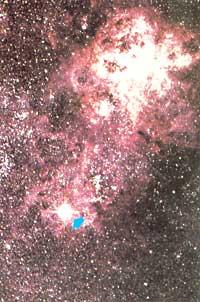
In type II supernovae there is no external operator. It is produced as an old building that falls by breaking of foundations. It is interesting to analyze this process, since the supernova of the year 1987 is of type II and will make us review our ideas about the stellar structure.
Stars are formed by condensation of interstellar gas. It has the same chemical composition as the interstellar cloud of birth. If there is no other compressing force, the star will collapse due to its gravity. In the beginning, the collapse is opposed to the pressure of the stargas that is confined and heated to lower volume. But the star cannot confine thermal energy and it flees into space in the form of radiation. Balance is unattainable and collapse remains.
End of contraction, to develop the star zone and analyze the stars that have exhausted the nuclear fuel. A star of this type cannot maintain stability because the thermostat mechanism of nuclear reactions has been finished and the gravity that has been waiting for millions of years suffers a revenge and collapses the heart of the star in a short time.
Once the conversion reactions of silicon into iron are over, everything happens very quickly. According to theoretical models, with all the material falling in a few milliseconds a shock wave is formed. The contraction raises the internal temperature as in previous cases, but this time no other nuclear cycle starts. This reaches three billion degrees. This is higher than the speed of photodisintegration of iron (which means that the energy of the photons is higher than the binding energy of the nucleons) and the iron core disintegrates. The nucleus disintegrates completely into protons, neutrons and alpha particles, destroying the structure it has required to form millions of years, returning to its initial state. There is an apparent paradox that in the processes that have led from hydrogen to iron, the enormous amount of mass has become energy and has radiated into space. How can you retreat now? The gravitational field provides the energy needed to generate mass.
In addition, in this pressure and temperature there is a large disintegration of reverse beta: electrons and protons combine to form neutrons and the electric charge disappears. At that time there is a sharp contraction that prevents neutrons from approaching each other. The created shockwave is reflected in the area and spreads sharply outwards expanding the stellar remnants into space. Only the neutron star zone remains. The energy balance of this process is enormous: when the brightness is maximum, the supernova has a luminosity 10 times greater than the Sun, that is, equal to the luminosity of an entire galaxy. Throughout its evolution it will emit 10 49 erg of light.
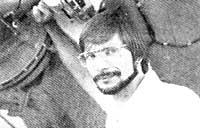
The kinetic energy of the projected material is 50 times higher. But kinetic energy and radiation are only 1% of the energy generated by the supernova (10 53 erg). The other has been emitted neutrally. By crossing the shell more easily than electromagnetic radiation, they escape a few seconds earlier. Neutrinos traverse space with the speed of light or the speed of the sun, as their mass is zero or almost zero. (The maximum limit of 15 eV has been reached for the neutrino mass of the 1987 supernova A. This has been a huge work of experimental physics.)
The theoretical model currently accepted for type I supernovae implies that a) these supernovae occur in the star formation regions, since due to the short life of massive stars die near their point of birth; b) having the upper layers of the unprocessed hydrogen star, hydrogen lines in the spectrum and c) produce large amounts of neutrino. This model was developed by studying supernovae that occur in other galaxies and is consistent with them. However, as these galaxies are far away (ten million light years, except in very few cases), the precision in our observation is limited. That's why astronomers have been waiting for a gift that demonstrates their theories, which took place on February 24.
Supernova 1987 A is located in the Great Magellanic Cloud (the galaxy of our galaxy is a small satellite). Visible from the southern hemisphere in the constellation of Doradus. The Great Magellanic Cloud is 170,000 light-years from us, which caused the explosion to occur 170,000 years ago, even though that was not possible for us. In a color photo of the cloud you can see two different areas: the main body is a yellow bar.
To the northeast of the bar is the region 30 Doradus, known as the tarantula nebula. In this region there are plenty of bright blue stars that tell us what the star-making region is. Superbon 1987 A exploded about 30 Doradus, that is, in the region of blue stars, where the supernova type II could be predicted.
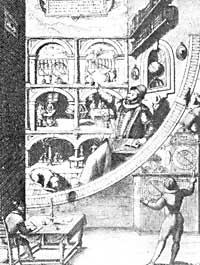
Since this supernova appeared, there have been surprises. The first refers to the identification of the star that exploded. To be able to identify the old one through photographs for astronomers of special interest. So they could get implicit information about the stars that support a supernova. However, to date the identification has not been complete. The 1987 supernova A, the Sandule, coincides with the star -69°202 with the error of few percentages of arc seconds. This star is a red supergiant of the B3 class. This seems to be detached from the two Canadian stars near this place, which are at a distance of a second arc.
But a week after the explosion the IUE satellite (international ultraviolet explorer) surprised the Sandule by announcing that -69°202 was still shining. The same thing happened with his friends. What has been the star that has burst? Since there is no net change, the Sandule -69°202 speculates with the idea that it could be a binary star. The second member of this system could be a red supergiant type K and could not be differentiated in the photos of his brilliant friend. The latter could be the one that exploded. However, a nearby explosion should hide the star Sandule -69°202 and this has not happened.
Another surprise has been the moderate increase in brightness in the optical band and spectrum radius compared to other supernovae of the same type. This seems to indicate that the shell of stars was small.
It seems that the processes that occur in the star zone are better understood than those that occur in the shell. The amounts of neutrino received from SN 1987 A confirm the pattern of the collapse of type II supernovae.
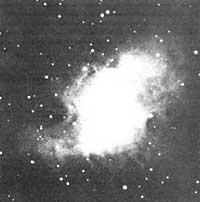
What happens when a supernova is created in the interstellar environment? To imagine that a maternal sphere comparable to the size of the Sun expands in space at a speed of 16000 km/s. It is a powerful shock wave (sweeping the interstellar gas, removing cosmic dust and creating a high temperature zone (1.10 degrees) inside.
This cosmic bubble begins to cool down, first by expansion and then by radiation. This occurs when the temperature drops below a million degrees and it is possible to observe the cause of the auditory emission it produces. This creates an object similar to the Cancer nebula. Nebula located in the constellation of Taurus, formed by the expansion of the remains of the supernova of 1054. This phase will cost hundreds of years. If the neutron star created by the supernova has a violent magnetic field (pulse mode), the free electrons contained in the material being spunted can emit synchroton radiation, both in radiofrequencies and in supervisors and X-rays.
Bubble expansion continues for thousands of years and the end result is a much hotter gas sphere than the interstellar medium. This temperature is between 10-100 K. Thus, the interstellar medium takes the form of a "gruyére". They are almost empty bubbles, produced by the explosion of supernovae. These are separated by cold and compact zones that connect over time. If the expanding wave finds molecular clouds, it produces its compression and can begin to form new stars.
Among the cosmic effects produced by a supernova is the chemical enrichment of the galaxy. The explosion disperses the star shell in space, consisting of hydrogen, helium, carbon, oxygen, calcium, magnesium, aluminum, phosphorus, etc. As in the creation of the universe it seems impossible that in interstellar space there are elements heavier than helium, the presence of all these elements in space is due to supernovae. There are traces in favor of the idea that the chemical enrichment of the galaxy was initially very fast.
This means that the frequency of supernovae was higher than the current one. It is curious that until now stars with the same essential components of the universe (hydrogen and helium) are not detected. Something smaller than the mass of the Sun and a star created ten billion years ago should be in the combustion phase of hydrogen. It would be legitimate to think that when our galaxy was formed large mass stars emerged that died in supernovae and are responsible for the chemical richness of the galaxy.
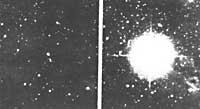
We will analyze another aspect of the supernova/chemical composition. Their importance from the cosmic point of view is less, but we are directly affected by human beings. If the other atoms that form our carbon, oxygen and life structures were to be remembered, perhaps they would fondly remember the inside of the star in which they were created and the day of catastrophe that a terrible explosion threw into the uncertainty of space. Then, about 5 billion years ago the Earth condensed on the planet and has become one of the most sophisticated structures that the irony of destiny has generated in Nature.
If some aspects of the 1987 A supernova have occurred as predicted by theoretical models, others escape our understanding. The type of stars that create supernovae remains a pending problem. If some day supernovae exploded in the vicinity of the Sun, look at what time it has been, because you can be the first man to see it. Get ready to think that Betelgeuse (constellation of Orio) can explode at any time between ten and one hundred thousand years.
It seems that in the vicinity of the Sun there is no candidate to the supernova. But since astronomers are very bad predictors, worse than meteorologists, do not miss hope. We will learn later that the universe is richer than we think. However, it is up to us to continue working, perhaps occasionally to remember that our existence is related to a beautiful, creative and fantastic Universe.

Gai honi buruzko eduki gehiago
Elhuyarrek garatutako teknologia




